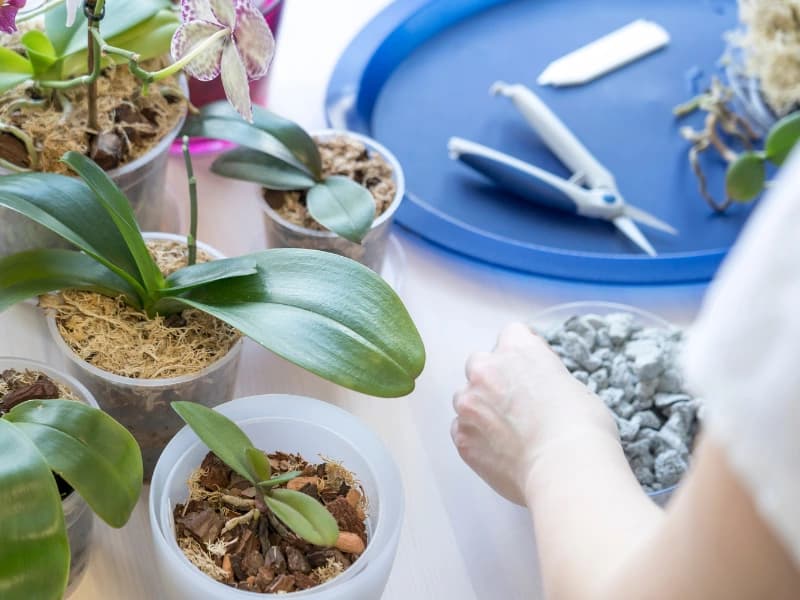Having fallen in love with the art of dish gardens - the ultimate solution for people with limited space for gardens or houseplants - now you might want to know how to make your own. A DIY dish garden is the perfect project for someone seeking mindfulness. Themed dish gardens also make a wonderful present and might be a fantastic and thoughtful alternative to traditional flower bouquets or houseplants.
You can also buy them from online plant and flower shops such as 1800Flowers, FromYouFlowers, and Plants.com - all of whom offer beautifully arranged dish gardens ready to be given as a thoughtful present!
To help you plant and maintain the DIY dish garden of your dreams, this article will cover everything you need to know before you create your own miniature landscape design. From how to make a dish garden to dish garden care tips, this guide will ensure you can build your own unique miniature landscape and are fully equipped to nail your dish garden maintenance routine.
Before we start, we recommend taking a look at our comprehensive introduction to dish garden ideas here. Ok, let’s get into it!
Understanding the Basics of Plant Care
The Role of Light in Plant Health
In dish garden maintenance, maintaining a reliable and balanced light source is vital to the health of your plants. Without the right lighting, your plants won’t be able to grow and flourish. So, one of the most important things to remember when wondering ‘how to make a dish garden’ is the light requirements for each plant you want to use.
The best plants for dish gardens are ones that share the same needs when it comes to light. Thus, before you start your miniature landscape design, ensure you have selected plants that all thrive in the same amount of light (and that they can have access to this in your chosen location).
Watering Techniques and Frequency
Overwatering is one of the most common problems when it comes to dish garden maintenance as many miniature landscape designs are in a container with no holes for drainage. This means that you need to pay close attention to the kind of container you’ve chosen and the watering requirements for the plants you’re using in your themed dish garden.

As a general rule, the best dish garden care tips we can give for watering techniques and frequency is to check the garden’s moisture twice a week by pressing your finger into the soil. If it’s dry, carefully drizzle water evenly over the container. If it’s moist, don’t water and keep checking daily until the soil becomes dry.
Related Post: How to Water Air Plants
Importance of Soil Quality
As many dish garden ideas involve using a container with no drainage holes, soil quality is really important for drainage needs, as well as providing a healthy foundation for your plants to thrive. Choose high quality soil and usually a mixture of soil composition for best results.
For example, our dish garden care tip is to place a layer of gravel, sand, or even broken pottery or stones in the bottom of a container to help with drainage. Ensure you place some form of screen over this to prevent soil settling into the cracks and ruining the drainage ability - you can use a weed cloth or other synthetic fabrics.
Then, depending on the plants you’ve used in your miniature landscape design, top this up with a high quality potting soil for houseplants or, if you’ve decided to have a cactus dish garden design, sand is best.
Related Post: How to Care for a Cactus in Winter
Pruning and Grooming Your Dish Garden
When and How to Prune
With most themed dish gardens you can prune freely to keep your plants at your desired size. Doing so will also reduce the plant’s demand to create a deeper root system which is important when using a shallow container. Thus, our dish garden care tips for pruning are to do so whenever you see a need.
Related Post: Creating a Desert Oasis - Tips for Designing a Cactus and Succulent Dish Garden
Removing Dead or Diseased Plants
As in all plant care, removing dead flowers or diseased plants is necessary to keep the container healthy, as well as looking its best. Doing so also enables other plants to grow more effectively with the cleared space.
Encouraging Healthy Growth
Following these steps will encourage healthy growth of all the best plants for dish gardens. However, there is only so much pruning you can do before some plants will grow too big. An important part of dish garden maintenance is replanting your jungle, rosette, or cactus dish garden design when it starts to get too big for its container. Be sure to look out for signs of this overcrowding and move to a larger container when this happens.
Fertilizing and Feeding
Given that the point of DIY dish gardens is that they are self-contained and deliberately small, generally the best plants for dish gardens are slow-growing and therefore don’t require fertilizer. Dish garden care tips aim to keep your plants contained within your miniature landscape design for as long as possible. Fertilizer achieves the opposite effect as it encourages growth.
Therefore, whether it’s succulent dish garden care or caring for a jungle-themed dish garden, fertilizing isn’t necessary.

Troubleshooting Common Issues
Dealing with Pests
Like any garden or houseplant, miniature landscape designs can experience pest issues. Keeping an eye out for common pests and having a non-toxic pest spray on hand for when you do find them will help to prevent their multiplication. As ever, prevention is cure when it comes to dish garden maintenance.
Addressing Fungal and Bacterial Diseases
Many fungal and bacterial diseases that arise in themed dish gardens come from overcrowding. Ensure your plants have enough space to avoid this and, should your garden succumb to disease, thin your plants and rearrange surroundings to overcome it. Increasing light access and improving air circulation will help vanquish disease, as well as judicious pruning. Be sure to always cut back to healthy tissue to ensure you get rid of any trace of disease.
Correcting Watering Mistakes
As mentioned, overwatering is one of the biggest problems people face with themed dish gardens. The fastest way to correct watering mistakes is to pay close attention to your DIY dish garden to see if it’s being overwatered or the soil is draining ineffectively. If the soil is moist when you’re watering your garden, you know that you need to correct your schedule and water less frequently.
We hope if you were wondering ‘how to make a dish garden’, this article has answered all of your questions and you feel ready to tackle your succulent dish garden care or give your cactus dish garden the love and care it needs.